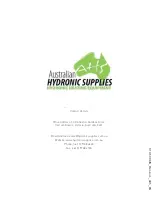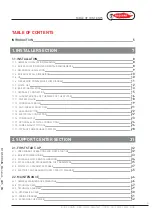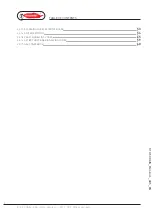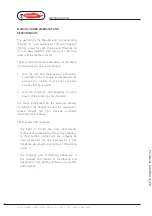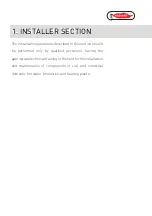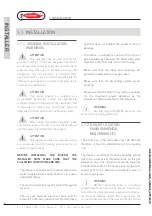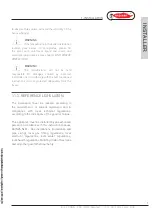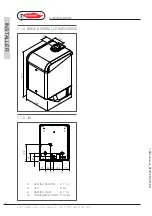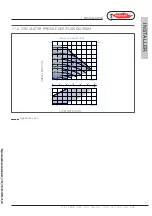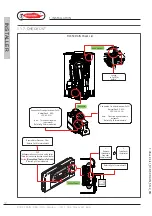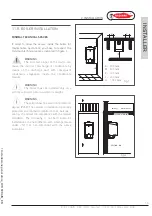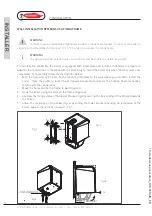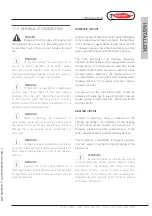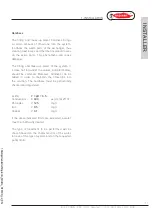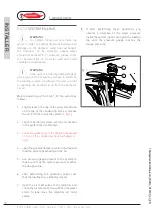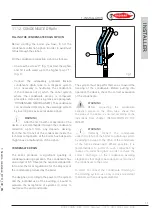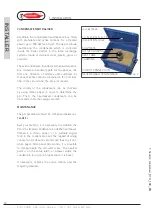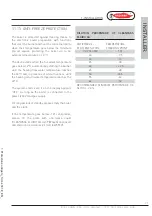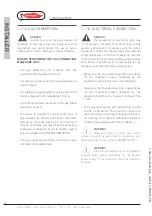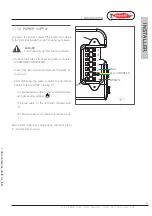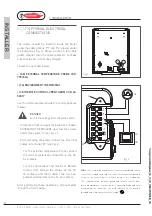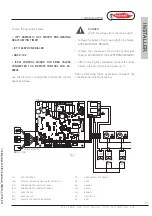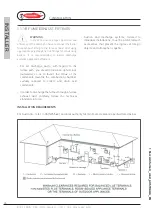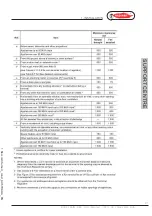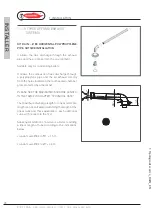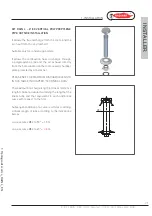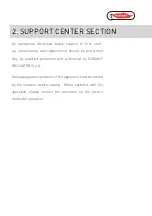
16
R1K 50 RAIN - RAD - ING - Man.Inst. - 1901.1_SK.3_firm.L224C_AHS
1 Riempimento
dell'impianto_MIAH4_R1K
100_v
.2_EN
1. INSTALLATION
INST
ALLER
1.1.10. CHARACTERISTICS OF THE
WATER OF THE SYSTEM
For a correct operation of the system, it is
necessary to make sure that:
1. The system does not present losses or that the
most obvious are at least eliminated;
2. If an automatic filling system is present, a litre
meter must be installed in order to precisely know
the extent of any losses;
3. The filling in of the system and the top ups are
performed with softened water in order to reduce
the total hardness. The water must also be treated
in order to maintain the pH within the provided
threshold so as to avoid corrosion phenomena.
4. Either on new systems or on replacements, the
system must be fitted with efficient systems which
ensure the elimination of the air and impurities:
Y filters, micro impurity separators and micro
bubbles of air separators;
5. Avoid draining the water of the system during the
routine maintenance even if it is about apparently
insignificant quantities: for example, in order to
clean the filters, provide the system with adequate
shut-off valves;
6. Always perform an analysis of the water of
the system before opening the communication
between the new generator and the system, in
order to establish if the parameters present in the
water indicate the need to fully drain the system,
to use the water already present in the system or
to chemically wash the system using utility water
adding a detergent when it is suspected that the
system might be dirty or particularly clogged and
at the next loading with new treated water.
Water treatment
In order to preserve the integrity of the water-
fume exchanger and to guarantee optimal thermal
exchanges, it is necessary that the water of the
primary circuit, circulating inside the exchanger of
the condensate boiler, has the characteristics defined
and constant in time. To obtain this, it is fundamental
to perform a series of system preparation and
maintenance operations such as:
• washing the system;
• check the characteristics of the water of the
system;
The type of treatment to be performed will be
chosen based on the characteristics of the water
to treat, of the type of system and on the requested
purity limits
Oxygen
A certain amount of oxygen always enters the
system, both during the filling phase and during the
use in case of reintegration or presence of hydraulic
components without oxygen barriers. The reaction
between the oxygen and the stainless steel creates
corrosion and forms sludge. While the water fume
exchanger is made of stainless steel, and therefore
it is not subject to corrosion, the sludge created in
the carbon steel system is deposited in the warm
points, including the exchanger. This has the effect
to reduce the heat capacity and thermally insulate
the active parts of the exchanger, which might
cause damages.
The precautions to limit the phenomena are:
- Mechanical systems: a deaerator combined with
a sludge remover, correctly installed, reduce the
quantity of oxygen circulating inside the system.
- Chemical systems: the additives allow the oxygen
to dissolve in water.

